Evolutionary Ecology
The department of Evolutionary Ecology gathers complementary skills in behavioural ecology, population dynamics, population biology, community ecology, and methodology (statistics and modelling). The research done in the department aims at studying how animal species evolve in a changing world by understanding the causes of the evolution of traits, adaptations and interactions. For that, we consider different levels of organization from individuals to populations and communities. Because organisms cannot be considered isolated from other biotic factors, we consider pathogens but also competing species within communities.
We study how individuals adapt to their environments that are largely impacted by anthropic pressures, and how life history traits and behaviour evolve in response to these pressures. Although we mainly focus on phenotype, we more and more consider the mechanistic link between the genotype and the phenotype. We develop the theoretical framework of our discipline through a conceptual and modeling approach. In parallel, we test hypotheses that arise from theoretical predictions through experimental, comparative and observational approaches on different biological models (insects, birds, mammals). Experimental approaches are developed in the laboratory (insect model) and in natura (bird, insect and mammal models). Observational and comparative research is mainly concerned with vertebrates. Our approaches are also, and increasingly, interested in the mechanisms of adaptive responses. In addition to the classical approaches of demographic analysis and trait change, methods of ecophysiology, chemical ecology and molecular biology are used.
Our department hosts several long-term studies of wild populations of different species. These long-term studies offer a valuable way to understand how biotic and abiotic factors affect individuals’ life history traits, and the functioning of populations in natura. Five populations of mammalian species are thus monitored for several years (more than 40 years on roe deer, 30 on Alpine marmots, 25 years on cats, 16 years on zebras, and 20 years on impala). Two of our study sites (La Sassière in Vanoise National Park (Alpine marmots) and Hwange National Park) have been certified as “Site d’Etude en Ecologie Globale” (SEEG), and two (ZA “Hwange” and ZA “Antarctic and sub-Antarctic”) were certified as “Zone Atelier” by the CNRS.
The department of Evolutionary ecology is also largely involved in training activities. Lastly, we also have strong socio-economic relationships. Indeed, because we address questions of major societal interest (global warming, public health) we tightly collaborate with socio-economic partners (Office Français de la Biodiversité, Vanoise National Park, Hwange National Park in Zimbabwe, Office National des Forêts, etc.) and participate to general public and media events.
Publications
Display of 601 to 630 publications on 2449 in total
Uptake of Diagnostic Tests by Livestock Farmers: A Stochastic Game Theory Approach
Frontiers in Veterinary Science . 7
Journal article
see the publicationMultilayer network analysis unravels haulage vehicles as a hidden threat to the British swine industry
Transboundary and emerging diseases . 67 ( 3 ) : 1231-1246
DOI: 10.1111/tbed.13459
Journal article
see the publicationSons accelerate maternal aging in a wild mammal
Proceedings of the National Academy of Sciences of the United States of America . 117 ( 9 ) : 4850-4857
Journal article
see the publicationApplication of General Unified Threshold Models of Survival Models for Regulatory Aquatic Pesticide Risk Assessment Illustrated with an Example for the Insecticide Chlorpyrifos
Integrated Environmental Assessment and Management . 17 ( 1 ) : 243-258
DOI: 10.1002/ieam.4327
Journal article
see the publicationRapid Evolution of HERC6 and Duplication of a Chimeric HERC5/6 Gene in Rodents and Bats Suggest an Overlooked Role of HERCs in Mammalian Immunity
Frontiers in Immunology . 11
Journal article
see the publicationIn silico and empirical evaluation of twelve metabarcoding primer sets for insectivorous diet analyses
Ecology and Evolution . 10 ( 13 ) : 6310-6332
DOI: 10.1002/ece3.6362
Journal article
see the publicationThe Link Between Covid-19 and Biodiversity : A Report Commissioned by the French Public Authorities
: 54 pages
Report
see the publicationScarless Removal of Large Resistance Island AbaR Results in Antibiotic Susceptibility and Increased Natural Transformability in Acinetobacter baumannii
Antimicrobial Agents and Chemotherapy . 64 ( 10 ) : e00951
DOI: 10.1128/AAC.00951-20
Journal article
see the publicationA multi-omics concentration-response framework uncovers novel understanding of triclosan effects in the chlorophyte Scenedesmus vacuolatus
Journal of Hazardous Materials . 397 : 122727
Journal article
see the publicationGenetic structure, ecological versatility, and skull shape differentiation in Arvicola water voles (Rodentia, Cricetidae)
Journal of Zoological Systematics and Evolutionary Research . 58 ( 4 ) : 1323-1334
DOI: 10.1111/jzs.12384
Journal article
see the publicationGenetic epidemiology of the Alpine ibex reservoir of persistent and virulent brucellosis outbreak
Scientific Reports . 10 ( 1 ) : 1-10
Journal article
see the publicationHydrology influences breeding time in the white-throated dipper
BMC Ecology . 20 ( 1 ) : 70
Journal article
see the publicationOn the use of the coefficient of variation to quantify and compare trait variation
Evolution Letters . 4 ( 3 ) : 180-188
DOI: 10.1002/evl3.171
Journal article
see the publicationFluctuating optimum and temporally variable selection on breeding date in birds and mammals
Proceedings of the National Academy of Sciences of the United States of America . 117 ( 50 ) : 31969-31978
Journal article
see the publicationSurface water quality assessment in a semiarid Mediterranean region (Medjerda, Northern Tunisia) using partial triadic analysis
Environmental Science and Pollution Research .
Journal article
see the publicationBacterial Transformation Buffers Environmental Fluctuations through the Reversible Integration of Mobile Genetic Elements
mBio . 11 ( 2 ) : e02443-19
Journal article
see the publicationHow does increasing mast seeding frequency affect population dynamics of seed consumers? Wild boar as a case study
Ecological Applications . : 1-11
DOI: 10.1002/eap.2134
Journal article
see the publicationIn Situ Reproductive Bioassay with Caged Gammarus fossarum (Crustacea): Part 1—Gauging the Confounding Influence of Temperature and Water Hardness
Environmental Toxicology and Chemistry . 39 ( 3 ) : 667-677
DOI: 10.1002/etc.4655
Journal article
see the publicationIn Situ Reproductive Bioassay with Caged Gammarus fossarum (Crustacea): Part 2—Evaluating the Relevance of Using a Molt Cycle Temperature‐Dependent Model as a Reference to Assess Toxicity in Freshwater Monitoring
Environmental Toxicology and Chemistry . 39 ( 3 ) : 678-691
DOI: 10.1002/etc.4656
Journal article
see the publicationExtend standardised methods and protocols for insect diet composition to insect energy and nutrient budgets
Journal of Insects as Food and Feed . 6 ( 5 ) : 441-443
Journal article
see the publicationKin recognition: Neurogenomic response to mate choice and sib mating avoidance in a parasitic wasp
PLoS ONE . 15 ( 10 ) : e0241128
Journal article
see the publicationArtificial light at night alters the sexual behaviour and fertilisation success of the common toad
Environmental Pollution . 259 : 113883
Journal article
see the publicationDo Equids Live longer than Grazing Bovids?
Journal of Mammalian Evolution . 27 ( 4 ) : 809-816
Journal article
see the publicationThe hidden ageing costs of sperm competition
Ecology Letters . 23 ( 11 ) : 1573-1588
DOI: 10.1111/ele.13593
Journal article
see the publicationAn individual-based model to assess the spatial and individual heterogeneity of Brucella melitensis transmission in Alpine ibex
Ecological Modelling . 425 ( 1 ) : 109009
Journal article
see the publicationSex differences in adult lifespan and aging rates of mortality across wild mammals
Proceedings of the National Academy of Sciences of the United States of America . 117 ( 15 ) : 8546-8553
Journal article
see the publicationVariation in the ontogenetic allometry of horn length in bovids along a body mass continuum
Ecology and Evolution . 10 : 4104 - 4114
DOI: 10.1002/ece3.6181
Journal article
see the publicationPopulation responses of roe deer to the recolonization of the French Vercors by wolves
Population Ecology . 62 ( 2 )
Journal article
see the publicationAn integrative view of senescence in nature
Functional Ecology . 34 : 4 - 16
Journal article
see the publicationReproductive senescence and parental effects in an indeterminate grower
Journal of Evolutionary Biology . 33 : 1256–1264.
DOI: 10.1111/jeb.13667
Journal article
see the publication
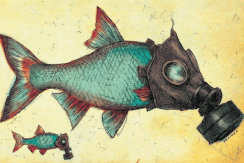
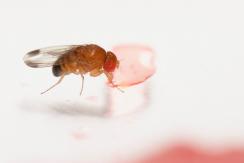
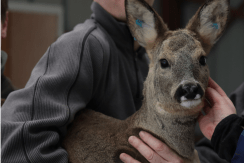
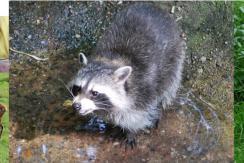
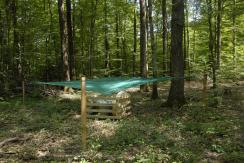
You also, comment on this article